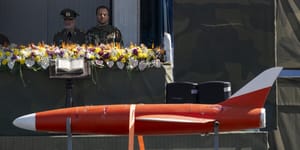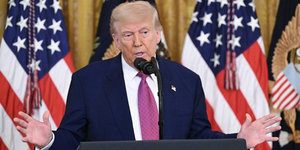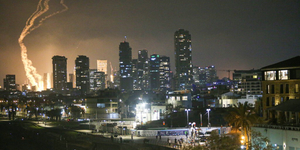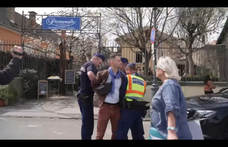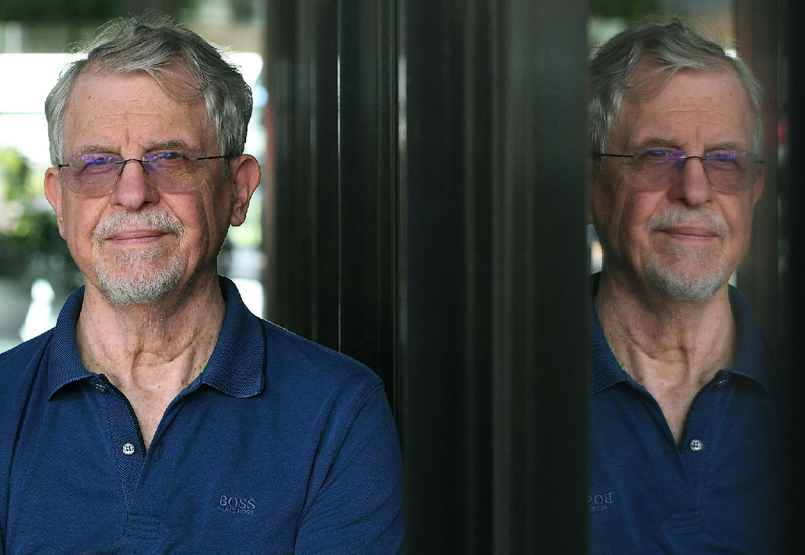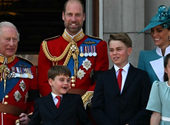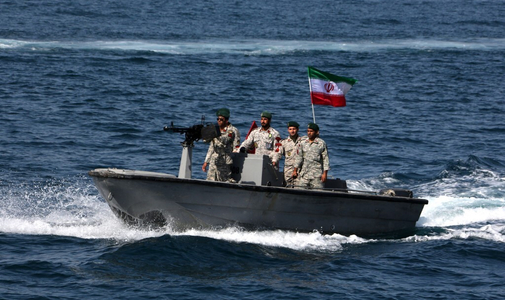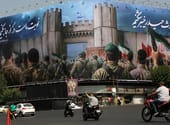A remarkable career began in April 1957 in front of the Corvin Department Store in Budapest. Seeing a flickering TV screen, a 33-year-old young woman decided to accept an offer made to her three days before by a TV producer, becoming a TV news producer. That's how Ms Jozsef Matuz remembers the beginning of her career in interviews. At the beginning, she was in charge of putting together a weekly 10-minute broadcast, before running the TV news for three decades, until the end of 1985. By this time, she was running an operation that produced three bulletins daily and was put together by a team of hundreds.
 © MTV |
It's still not clear who decided in 1954 that that Magyar Radio should set up a TV news department, and nor does anybody know why Matuzne was chosen to put it together. It is in any case a fact that the young woman (then a civil servant at the Ministry for Popular Education), who had a teachers' diploma, was better qualified than her then and later bosses. She spoke two languages tolerably and her party and trade union activities must have been reassuring to the people who appointed her. Initially, the news broadcasts were taken from cinema newsreels. On 2 July 1957, the Picture News she edited replaced the newsreels. The TV was then operating from four or five rooms in the Stock Exchange Palace on Szabadsag ter. Her team had to work with primitive equipment. They had a single, vast film camera, and on-location broadcasts had to be put together days in advance. A voice track had to be added later, in a time-consuming synchronisation process. The alternative - which everyone preferred - was to take the film reel up to the studio on Szabadsag Hill (today's Szechenyi Hill), where the announcer would read out the text live.
The TV news's position was far from secure. Hungarian Radio and Television's (MRT) management was not sure they wanted anything like this. In 1958 there was even talk of axing the TV news to save money. Things changed when the former textiles worker Laszlo Gacs was chosen to head MRT. He had been a leader of the Communist Party when it was an illegal organisation during the war, and it was his decision to go from one weekly broadcast to two.
This was not welcome. The Hungarian Socialist Workers' Party's(MSZMP) leadership, partly because they were not keen on new technology, were not dazzled by the possibilities offered by television. For example, the MSZMP's political committee was most interested in the radio when they discussed electronic media in October 1959. Party leaders talked at length about the programmes they themselves listened to. Gyorgy Marosan told Gacs that "he would be glad to get up several times in the morning" if he could wake up to the Workers' Chorus. Janos Kadar said he would be glad if the radio report Gyula Gulyas would "show some excitement" when reporting on a match. They said nothing about TV schedules, even though there were already some 200,000 viewers in the country.
Only Antal Apro, first deputy of the ministerial council, showed any interest in the future of television, pointing out that in Moscow, "Comrade Mishkoyan has recommended that television should not be seen as a consumer good like a vacuum cleaner or a washing machine, as we have done for years, but as one of the important tools available to the political leadership." Kadar interpreted this as meaning that televisions should be sold more cheaply. No decision was taken, however, and even in the first half of the 1960s, Hungary had the highest licence fee, four times that of the Soviet Union, where TV broadcasts became free after three years of paying. The fee in Hungary was Ft50 a month, compared to an average monthly income of Ft1200 - equivalent to Ft4500 today, when the average monthly wage is Ft110,000. The Ft405m earned from the licence fee in 1964 would have been enough to build a planned new TV headquarters twice over - yet nothing was done. At the time, the cheapest televisions cost Ft5200.
Second part of the article (Oldaltörés)
The political committee did in the end agree that the country's leadership should appear more frequently on the radio and "possibly" on television as well. They also decided that the TV should broadcast news bulletins more frequently, using more up-to-date equipment. But it is indicative of the party's attitude that when the news staff asked Janos Kadar if the return to Moscow of Yuri Gagarin, the first astronaut, could be shown live, they first secretary later said: "I hesitated, because I was not a regular television viewer."
 Theme meeting at the newsroom in 1963 © MTV |
Matuzne later found a new ally in Istvan Tompe, MRT's next president, who served from 1962 to 1974. He had political influence, since he had served as first deputy to the Interior Minister from 1956, but also because he was part of Kadar's hunting party. In the Tompe era, the TV news underwent major reforms in 1964 and 1970, placing Hungary far ahead of the other Socialist counties' TV news programmes. At a meeting held in 1964 to decide how to modernise the TV news, Matuzne, Tompe and Karoly Grosz, the party secretary at MRT, four times mentioned Western examples to follow, without mentioning Eastern countries' models once. But the possibilities were limited. When it was suggested that a network of foreign correspondents be established, Tompe warned: "Higher authorities will get nervous about anybody with the title of correspondent. The time is not yet ripe for that."
But the TV news was a propaganda broadcast even if the most senior comrades weren't paying it any attention. It could not be otherwise, since the TV broadcasting only began when the MRT had been "cleansed of counter-revolutionary sympathisers and revisionist traitors" in 1957.
Those who remained carried out work that was apparently neutral. They didn't need to agitate. It took five weeks for a Hungarian politician to appear on the screen - it was Gyorgy Marosan, the Minister of State. The first broadcast, on 2 July 1957, was about work in a thread factory, about football on motorbikes and a cycling competition. But showing happy and satisfied workers and peasants was itself a political message. There were other more openly propagandistic broadcasts, including one on the rebuilding of the Corvin Cinema, which had been badly damaged during the 1956 revolution. From the beginning of the 1960s, there were growing numbers of foreign reports about "the crisis of capitalism." These showed demonstrations in the West, strikes, unemployed people queueing for benefits and colonial struggles, while domestic reports were about female workers singing the praise of their new factory machinery or besuited young men heading straight from passing their school leaving exams to report for work at a textile painting factory. There were occasional reports about smaller frustrations or shortages, which "remained temporarily" even under socialism. But the Kadarist consolidation tended to favour sport reports.
With growing viewing figures and ever longer broadcasting times, the TV news couldn't avoid ideological rulings. Indeed, the party leadership more than once interfered directly with the editorial process. The lead film editor, Maria Kramer, remembers that when she was cutting Kadar's statement on Kruschev's resignation in October 1964, she had a three-man committee sitting behind her to decide which parts of the speech to keep to make it "politically correct and comprehensible."
But this was an exception. As Matuzne told HVG, in her day-to-day work, there was little freedom but not that much need either. Matuzne herself was the political guarantee. She was the strongest figure in the office. In 1983, she revealed the secrets of her duty of censorship. "We bear in mind the interests of the audience and the country. If these two sets of interests can be brought into harmony, then we report on what we report on."
LÁSZLÓ LŐRINC


